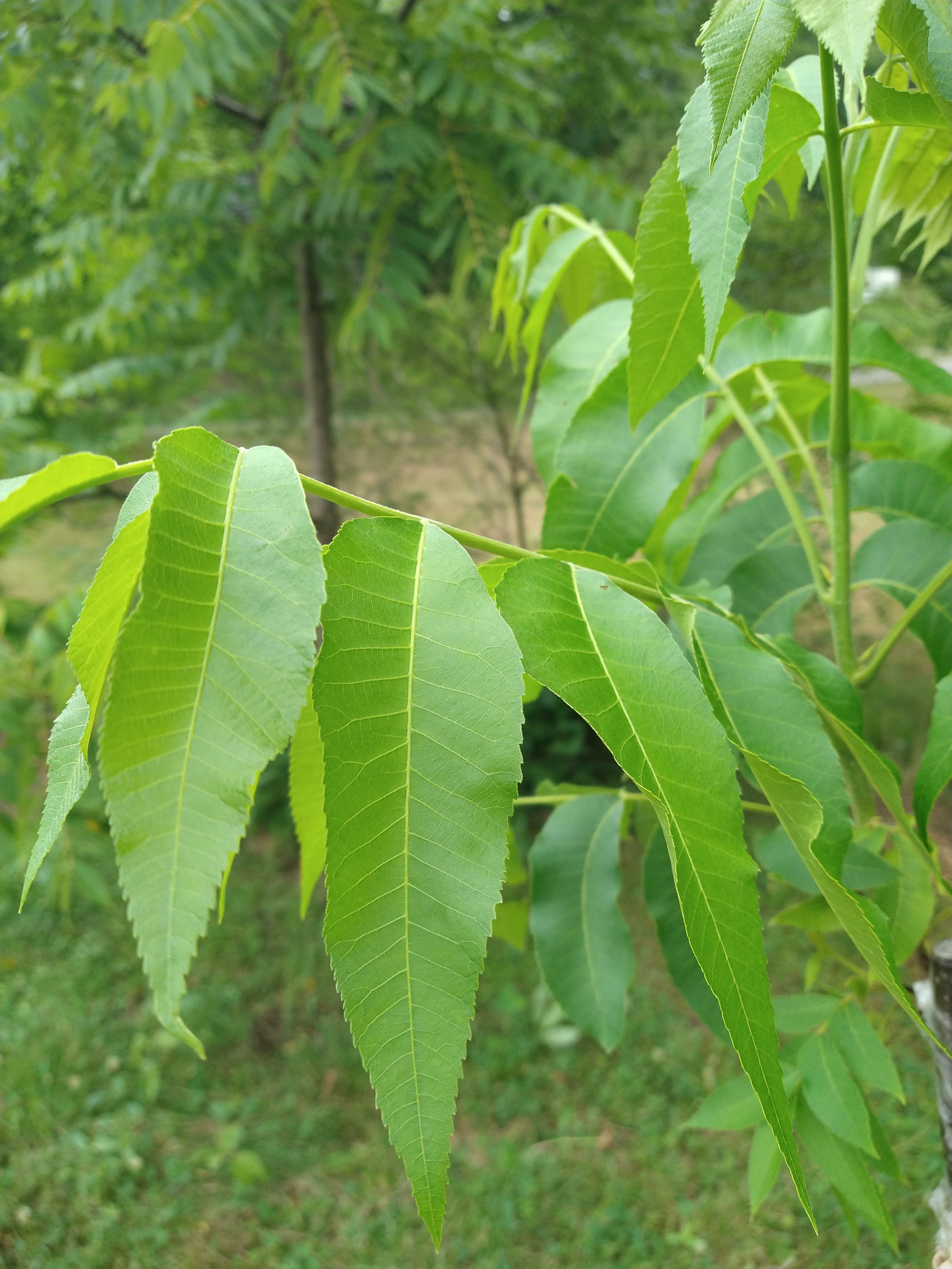Pecan
Carya illinoinensis is a hardy deciduous shade tree, the largest of the hickories and is native to the central/east central United States. It is grown mostly for its delicious edible nuts that appear in the summer after an insignificant bloom. It has a uniform, symmetrical, broadly oval crown and is massively-branched. Large major limbs grow up and out from the trunk in a distinctive upright, spreading fashion. Trunks can grow to 6 feet in diameter!!
Growing conditions: Pecan prefers bottomlands. It grows best in full sun to partial shade. It tolerates clay, sand, and loam soils—alkaline or acidic—as long as they are well drained.
Size at maturity: 70’-100’
Uses: We are carrying pecan to be used as rootstock for improved cultivars of pecan nut to be grafted on to. DYODD on this please, nut grafting can be tricky and pecans are further complicated with their unique flower habits (see note on pollination below).
USDA Plant Hardiness Zone: 3-8
Important note on pollination: Pecan trees are monoecious: they have separate male and female flowers on the same tree. Pollen is not released when flowers are receptive, so pollination within and between the same cultivars is limited. Cultivars are separated into type I and type II for pollination purposes. For optimum pollination, it is recommended planting at least three cultivars with at least one of each pollination type for best cross-pollination. All cultivars have positive and negative attributes, so do your research before purchasing.
USDA Plant Hardiness Zone: 5-9
Carya illinoinensis is a hardy deciduous shade tree, the largest of the hickories and is native to the central/east central United States. It is grown mostly for its delicious edible nuts that appear in the summer after an insignificant bloom. It has a uniform, symmetrical, broadly oval crown and is massively-branched. Large major limbs grow up and out from the trunk in a distinctive upright, spreading fashion. Trunks can grow to 6 feet in diameter!!
Growing conditions: Pecan prefers bottomlands. It grows best in full sun to partial shade. It tolerates clay, sand, and loam soils—alkaline or acidic—as long as they are well drained.
Size at maturity: 70’-100’
Uses: We are carrying pecan to be used as rootstock for improved cultivars of pecan nut to be grafted on to. DYODD on this please, nut grafting can be tricky and pecans are further complicated with their unique flower habits (see note on pollination below).
USDA Plant Hardiness Zone: 3-8
Important note on pollination: Pecan trees are monoecious: they have separate male and female flowers on the same tree. Pollen is not released when flowers are receptive, so pollination within and between the same cultivars is limited. Cultivars are separated into type I and type II for pollination purposes. For optimum pollination, it is recommended planting at least three cultivars with at least one of each pollination type for best cross-pollination. All cultivars have positive and negative attributes, so do your research before purchasing.
USDA Plant Hardiness Zone: 5-9
Carya illinoinensis is a hardy deciduous shade tree, the largest of the hickories and is native to the central/east central United States. It is grown mostly for its delicious edible nuts that appear in the summer after an insignificant bloom. It has a uniform, symmetrical, broadly oval crown and is massively-branched. Large major limbs grow up and out from the trunk in a distinctive upright, spreading fashion. Trunks can grow to 6 feet in diameter!!
Growing conditions: Pecan prefers bottomlands. It grows best in full sun to partial shade. It tolerates clay, sand, and loam soils—alkaline or acidic—as long as they are well drained.
Size at maturity: 70’-100’
Uses: We are carrying pecan to be used as rootstock for improved cultivars of pecan nut to be grafted on to. DYODD on this please, nut grafting can be tricky and pecans are further complicated with their unique flower habits (see note on pollination below).
USDA Plant Hardiness Zone: 3-8
Important note on pollination: Pecan trees are monoecious: they have separate male and female flowers on the same tree. Pollen is not released when flowers are receptive, so pollination within and between the same cultivars is limited. Cultivars are separated into type I and type II for pollination purposes. For optimum pollination, it is recommended planting at least three cultivars with at least one of each pollination type for best cross-pollination. All cultivars have positive and negative attributes, so do your research before purchasing.
USDA Plant Hardiness Zone: 5-9

